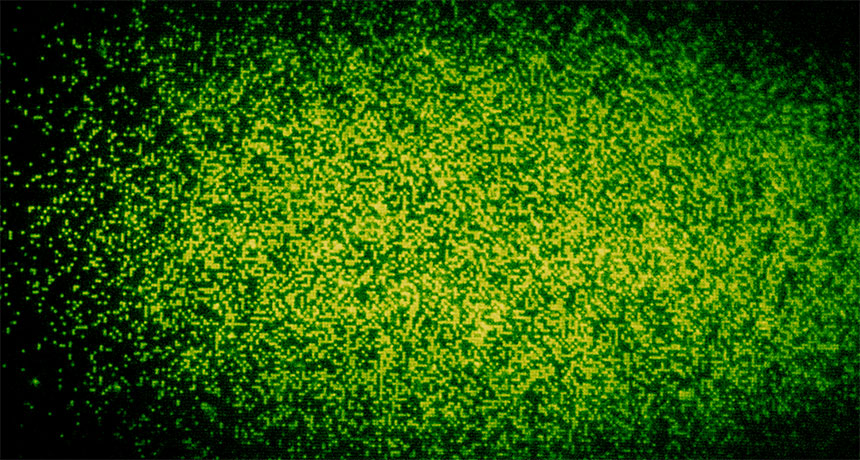Spooky quantum connection quantified for multiple particles
‘Entanglement entropy’ measurements provide clues to properties of complicated systems

EVERYWHERE ENTANGLEMENT Each green dot in this cloud is a rubidium atom. Harvard physicists isolated sets of four atoms and measured the degree of entanglement between the atoms.
Markus Greiner







